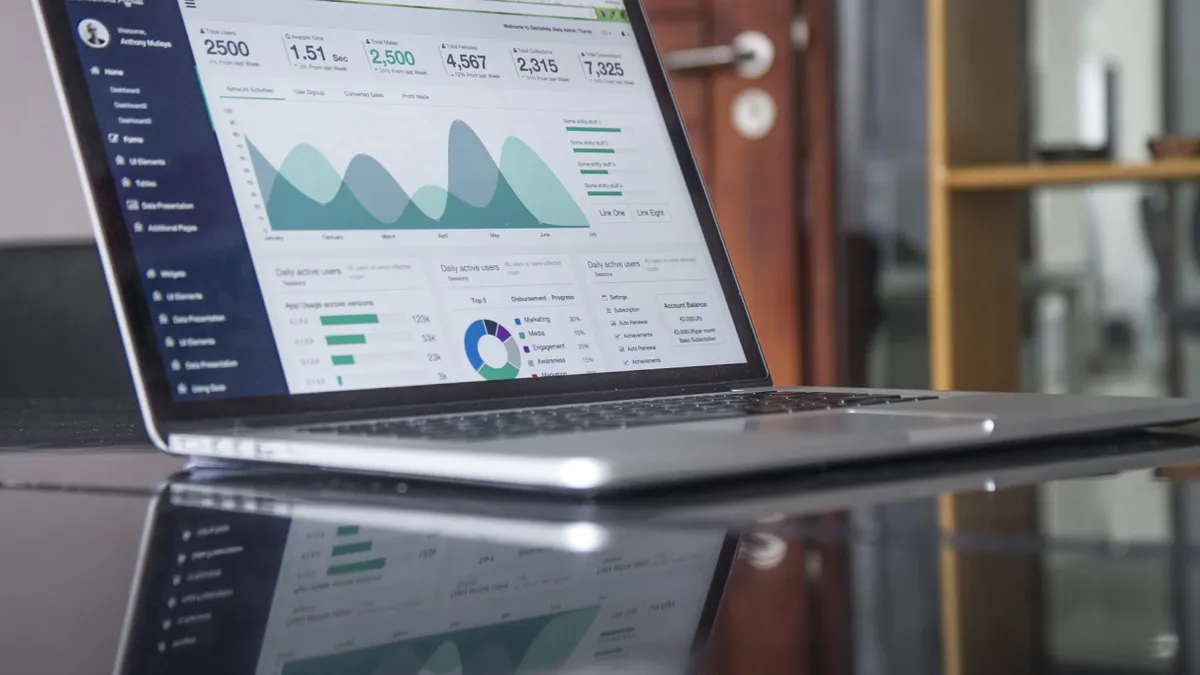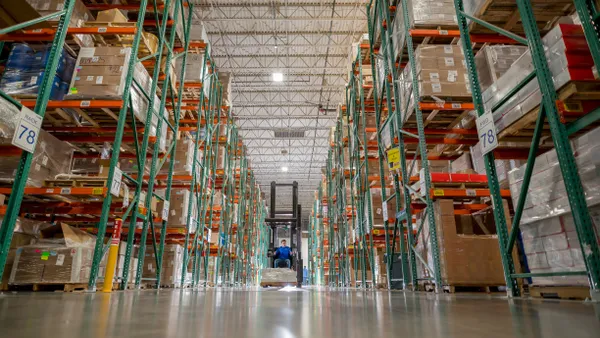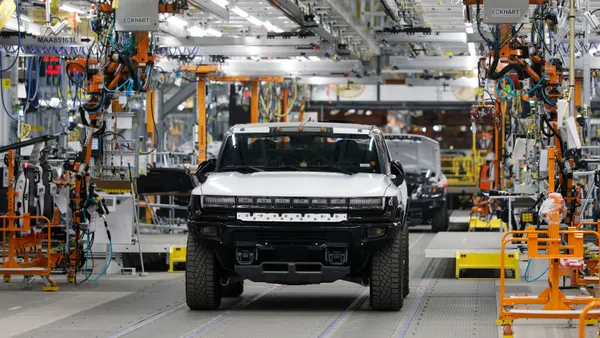Dive Brief:
- The number of supply chain professionals who say they're currently using predictive analytics at their company has grown 76% from 2017 to 2019, according to a Supply Chain Dive analysis of the annual MHI Industry Report. In 2019, 30% of respondents said they were currently using this technology, up from 17% in 2017.
- Another 90% of respondents said predictive analytics was a technology "that will have an impact on the supply chain in the next 10 years," according to the report.
- At the same time, fewer respondents said they're unlikely to adopt predictive analytics — down to 7% in 2019 from 11% in 2017.

Dive Insight:
Predictive analytics is the process of taking the data gathered from everyday operations and converting it "into valuable nuggets of insight," MHI wrote in this year's report.
"Supply chain executives are beginning to better understand and value advanced analytics," Thomas D. Boykin, a supply chain specialist at Deloitte and leader of the MHI white paper over the last six years, told Supply Chain Dive in an email.
The shifts in survey numbers could be a sign more companies are successfully making the transition from just collecting data to making it useful for their daily operations. But at 30% adoption, those that have made the jump are still the minority. Many of the companies that have yet to do so, though, have plans to use predictive analytics soon — 57% say they aren't using it today but have plans to use it within the next five years.
"Early use cases of predictive analytics focused on inventory management," Boykin said. "For example, pre-positioning inventory to reduce cycle times and improve customer service. However, new applications are expanding across many industries including healthcare and transportation planning."
As companies begin to use the Internet of Things (IoT) within their operations, data being collected could prove useful for predictive analytics. Making use of these data-heavy processes requires a company to first understand the numbers it is working with, according to John Slavik, the iWarehouse sales manager at Raymond.
"Without understanding your data first and knowing where you are today, or where you were last year, you can't truly predict what you're going to be going for. Right? You're just guessing," Slavik said last week at ProMat 2019 in Chicago.
Last year, Delta Air Lines began working with Airbus on a predictive analytics partnership focused on anticipating aircraft maintenance needs. "The system will help us better predict pending component or system anomalies so that we can address them before we have an operational disruption," Gary Hammes, Delta’s vice president for engineering, told The Wall Street Journal last year.
MHI found the biggest hurdles to bringing predictive analytics into a company are a lack of understanding of the technology, its impact on business and a lack of talent to put it in place. A recent survey by CAPS Research presented at the Institute for Supply Management (ISM) conference last week found procurement managers see data analytics skills as the largest skills gap in their organizations, followed by supplier risk management and category expertise.
Finding this talent could place a ceiling — even if it's temporary — on the use of predictive analytics. These survey numbers from MHI show interest is growing in this kind of technology. Now it's just about finding the people to make it happen.
"Companies are indeed facing a 'chicken-or-egg' problem where they have a tremendous need for digital talent, yet their hesitancy to embrace a digital culture makes them less attractive to such talent," Boykin said. "Embracing a digital supply chain mindset can unlock the door to helping an organization create a workplace environment that leverages the latest digital technologies to attract, train, retain and inspire today’s workers."
Shefali Kapadia contributed to this report.
This story was first published in our weekly newsletter, Supply Chain Dive: Operations. Sign up here.













